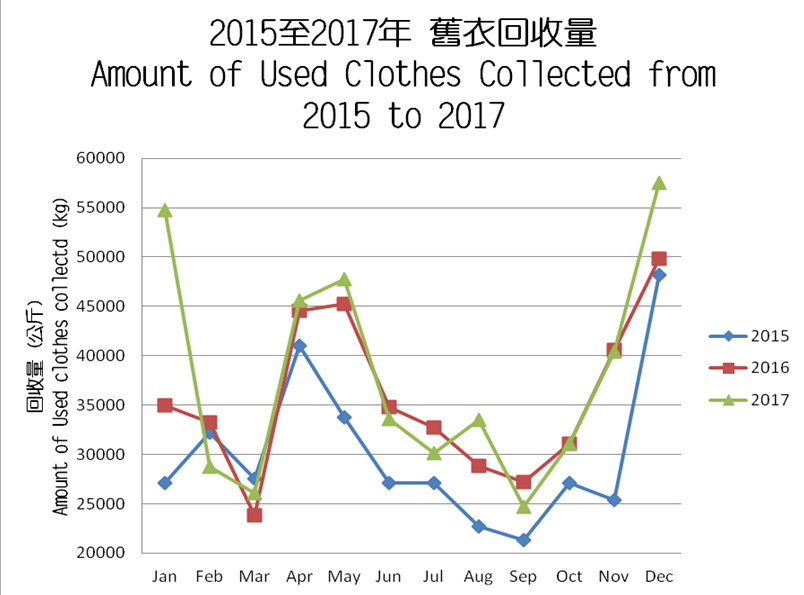Between 2011 and 2017, the amount of used clothes collection increases year after year and such increase has been rapid since 2016. 2018 is here, which is also time to tally the amount of used clothes collected in the previous year. The collection average from 2011 to 2015 was 333 tons. The amount was increased further to over 400 tons in 2016 and reached 450 tons for 2017! The 100+ tons increase within 2 to 3 years showed that Hong Kong people are discarding clothes rather easily nowadays.
It is believed that this recent phenomenon is in part caused by fast fashion and online shopping. Under the fast fashion trend, prices of clothes are low and the production cycle of new clothing is quick. The lowered price point changed people’s mindset towards their purchase where it usually lacks considerations before making the decision. They also seldom treasuring the clothes since they don’t think the clothes are valuable. Some don’t even regret buying unsuitable and unnecessary clothes given their vast selection. At the same time, online shopping has become a convenient way to shop without going anywhere while prices remain affordable. Such shopping habits may also increase a consumer’s disposal of clothes because return and/or refund are not always available for unsuitable items.
Everyone loves beautiful things, especially new and attractive things. However, behind the production of clothes we wear comes serious pollution. Various manufacturing process, including thread making, softening and bleaching, printing and dyeing, adding a water-proof layer, etc. produce a large amount of harmful chemicals. Textile factories without proper management may discharge their sewage to nearby waters and soil, which pollutes the environment and affects our health. Furthermore, cotton plantation needs a great deal of water for irrigation, while dyeing also consumes a large amount of water for cleaning and applying chemicals to the fabrics. Therefore, it was estimated that 2,700 litres of water is required to produce the cotton needed to make a single t-shirt, which is a sufficient amount for one person for 2.5 years.
Over-purchase of clothes may not require huge amounts of money but it surely bears huge costs to our environment. Further considerations before each purchase are then required to avoid making unnecessary purchases. We should also treasure the clothes we owned and don’t discard them easily. Consumers need to change their purchasing behaviors and recycling shouldn’t be an easy way out for one’s desire to want new things.
It’s good to set a new goal for the New Year. Let’s nurture green habits and practice the green living together in 2018!
References:
1 http://www.greenpeace.org/hk/campaigns/toxics/work/water-pollution-of-fashion/
2 https://www.worldwildlife.org/stories/the-impact-of-a-cotton-t-shirt


